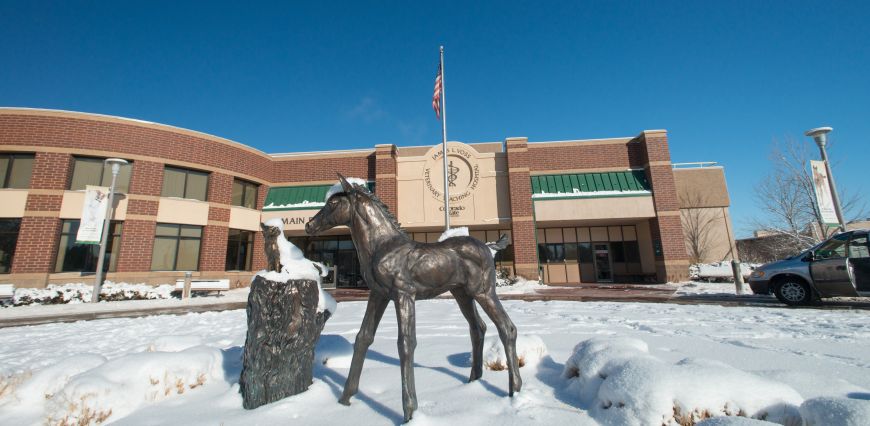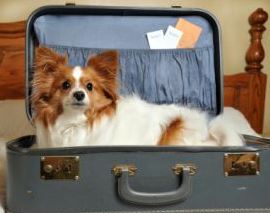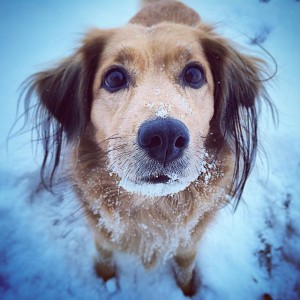Pet Health: Veterinarians offer seasonal tips to ease travel with pets and to prevent ‘pupsicles’
by Dr. Rebecca Ruch-Gallie | December 10, 2013 10:40 AM

With arrival of the holidays and wintry weather, many pet owners are thinking about seasonal issues, including traveling with pets and how to avoid health problems related to cold weather. Here is some advice that might help.
If a furry friend will be traveling with you during the holidays, it’s important to consider pet health, travel arrangements, and pet needs away from home.
Is your pet healthy enough?
Does your pet seem stressed by hustle and bustle or long hours confined to small spaces? Does he suffer from an illness or injury that could worsen with travel? Traveling with your furry friend can be wonderful, but can turn unpleasant if a holiday trip becomes stressful for you, your pet, or your hosts. Before departing, be sure to consider your pet’s temperament, your temperament, and the preferences of your hosts regarding pet guests.
 It is always a good idea to have your pet examined by a veterinarian prior to leaving. Your veterinarian can help determine that your pet is free of disease and healthy enough for travel. Whether you are traveling by car or plane, a health certificate signed by a veterinarian is recommended.
It is always a good idea to have your pet examined by a veterinarian prior to leaving. Your veterinarian can help determine that your pet is free of disease and healthy enough for travel. Whether you are traveling by car or plane, a health certificate signed by a veterinarian is recommended.
What about trip logistics?
If you are traveling by car, consider where you will stay while on the road. When planning lodging, you will want to identify in advance places that are “pet-friendly.” Also plan to take frequent potty and exercise breaks if you will be in the car for long periods.
Make sure you restrain your pet properly in the car and at your destination. Loose pets create a hazard for the vehicle driver and for others on the road. Cats should always be confined to a carrier in a car. Remember when you arrive that pets left unattended in strange places can become stressed and destructive.
What to pack
- Plenty of your pet’s regular food and water.
- Food and water bowls.
- Pet medications and medical records, which might be needed unexpectedly. A first aid kit is a good idea.
- Crate or carrier to keep your pet confined when he or she is unsupervised.
- Proper identification tags with current contact information, including cell phone numbers.
- Favorite toy or chew toys to help keep your pet occupied.
- Familiar blanket or pet bed to help your pet feel safe and comfortable.
Will you travel by plane?
Always check in advance with your airline to meet requirements. Most airlines will require a health certificate before travel. You will also want to consider the size of your pet to find the appropriate carrier and to understand what the airline will allow. Familiarize your pet to being in the carrier before loading on a plane.
International travel may be more intense. Some places will require a quarantine period and specific series of vaccinations and micro-chipping. More information on the requirements for international travel can be found here[1].
No pupsicles, please
Cold weather is another seasonal concern for pet owners, as many of us know from a recent snap of brutal cold. Ideally, dogs and cats should be kept inside during very cold temperatures, but that isn’t always possible.

In the face of below-freezing temperatures that are even colder when factoring in wind chill, consider these tips for keeping dogs and cats warm and safe:
- Limit outdoor time if possible. Consider more frequent but shorter trips outside for work, potty, or play.
- Watch where you go. Ice can be dangerous for people and pets.
- Knit a sweater. Better yet, get Fido a water-resistant outdoor coat to help keep him warm and dry.
- Check the feet frequently. Snow between the toes causes hard and sometimes sharp ice balls that can be painful. Also, salt and de-icers can be damaging to the feet of dogs and cats. Be sure to wipe or wash off feet after animals have been outside in places that use these products, particularly before Fluffy cleans paws herself.
- Watch pet behavior. Animals will often let you know when they have had enough cold: Lifting feet, shaking, shivering, and searching for shelter are clues to bring your animals inside.
- Provide adequate water and food. Staying warm is hard work on the body; be sure to help your pet stay fueled. For outdoor animals, frequent water changes or a warming bowl may be needed.
- Provide good shelter if your dog or cat lives outside and either cannot or will not come in. Pet housing should be raised several inches off the ground. It should be big enough for the animal to turn around and lie down comfortably, but small enough to effectively collect body heat. Provide bedding for insulation inside the house.
- Make some noise. Outdoor cats and wildlife often seek shelter under the hood of your car in cold weather, so try to scare them out before you start the engine.
- Look for dangers in your house. Space heaters or bedding on or near heat registers can be dangerous for your dog and cat.
- Look for dangers in your garage. Antifreeze can be toxic for dogs and cats, so keep it in a safe place and clean up spills immediately.
- Check with your veterinarian if you have any concerns about your pet or her ability to handle the cold. Your veterinary team can offer suggestions for your pet.
Dr. Rebecca Ruch-Gallie is a veterinarian and clinical coordinator for the Community Practice group[2] at Colorado State University’s James L. Voss Veterinary Teaching Hospital[3], and Nicole Luke is a veterinary technician with the group. Community Practice provides general care, wellness services, and treatment of minor injuries and illnesses for pets.
- here: http://www.aphis.usda.gov/wps/portal/aphis/ourfocus/importexport/sa_animals/sa_pet_travel
- Community Practice group: http://csu-cvmbs.colostate.edu/vth/small-animal/community-practice/Pages/default.aspx
- Colorado State University’s James L. Voss Veterinary Teaching Hospital: http://csu-cvmbs.colostate.edu/vth/Pages/default.aspx
Source URL: https://source.colostate.edu/pet-health-veterinarians-offer-seasonal-tips-ease-travel-pets-prevent-pupsicles/
Copyright ©2024 SOURCE unless otherwise noted.